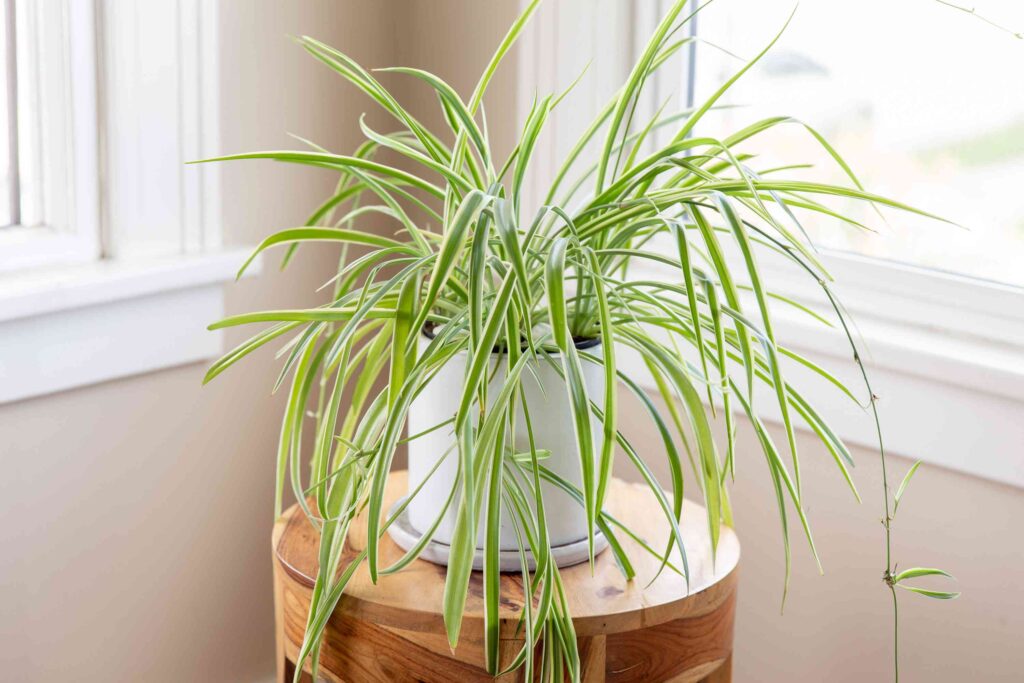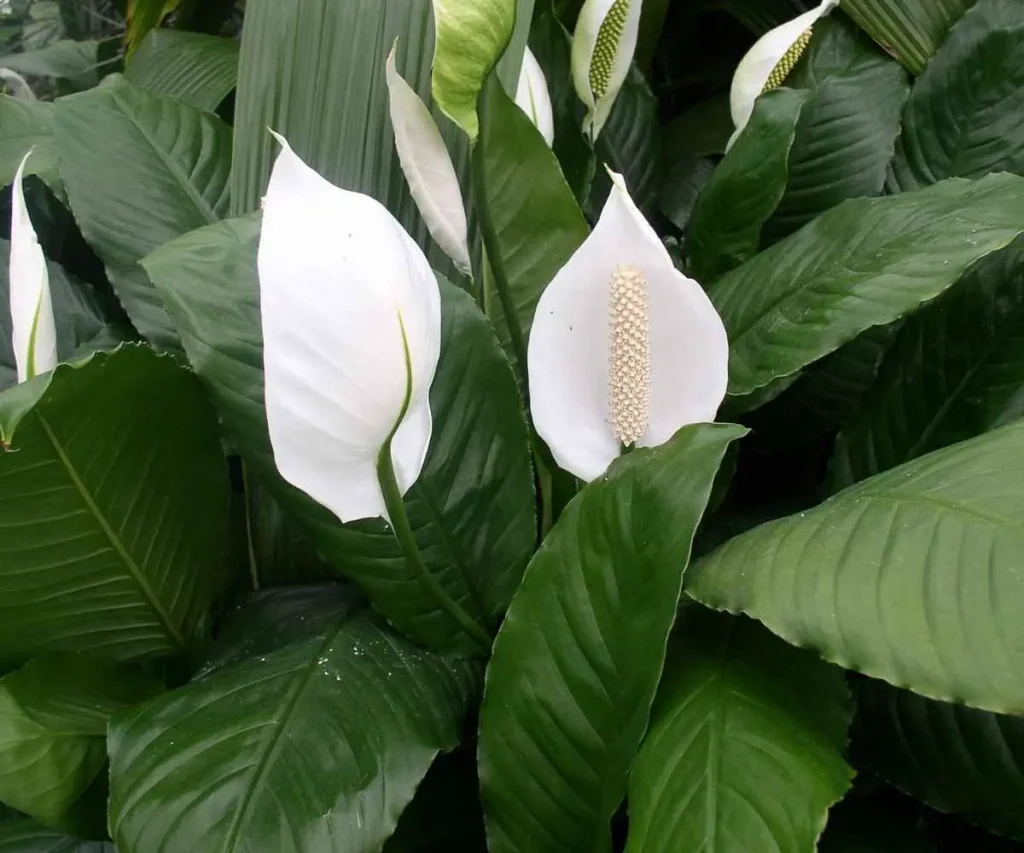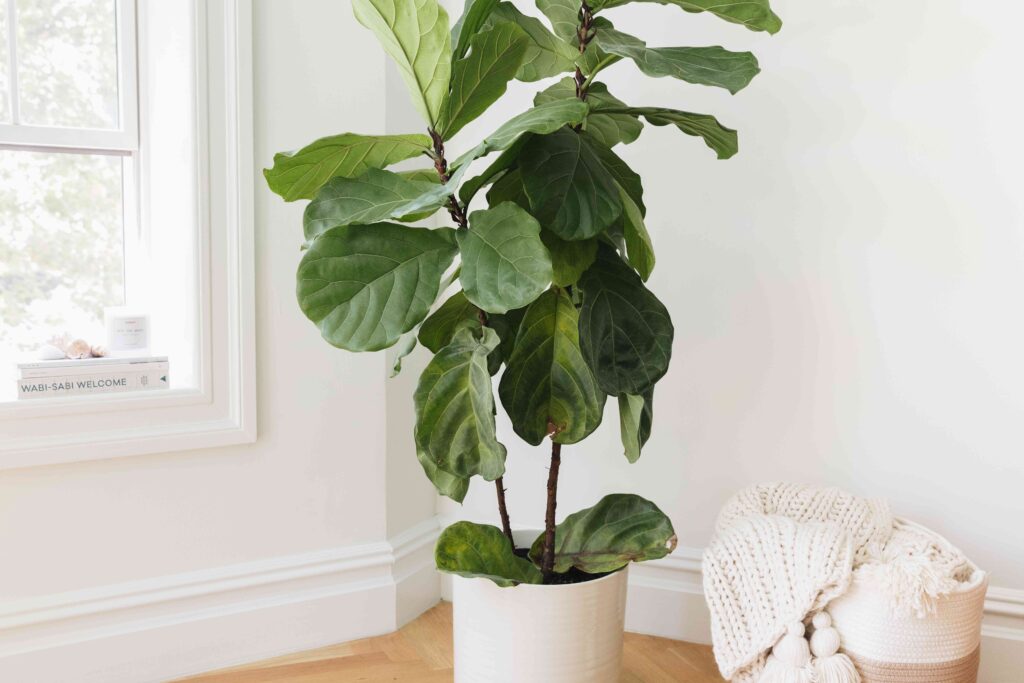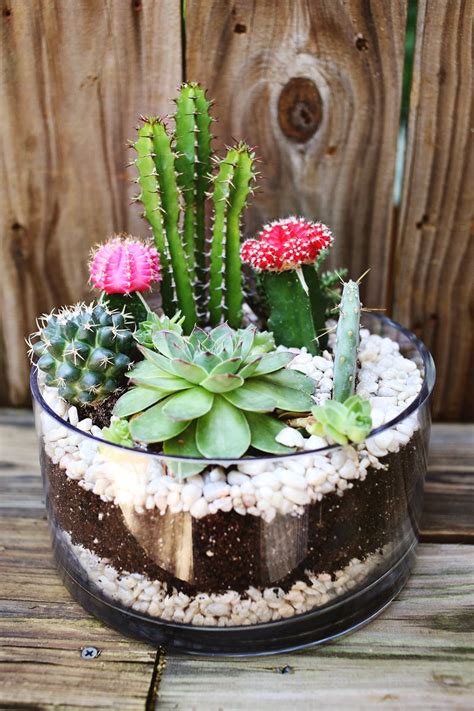House plants do much more than just beautify your living space—they also contribute to improved air quality, mental well-being, and overall quality of life. Here are some of the many benefits of incorporating house plants into your home:
- Air Purification: House plants act as natural air purifiers, filtering out toxins and pollutants from indoor air and releasing oxygen into the environment. Plants such as peace lilies, spider plants, and snake plants are particularly effective at removing common indoor pollutants like formaldehyde, benzene, and carbon monoxide.
- Stress Reduction: Spending time around house plants has been shown to reduce stress, anxiety, and fatigue, while promoting feelings of calmness, relaxation, and well-being. The act of caring for plants can be therapeutic and meditative, providing a welcome respite from the demands of daily life.
- Improved Mood and Productivity: House plants have a positive effect on mood and productivity, boosting concentration, creativity, and cognitive function. Studies have found that simply having plants in your environment can improve mood, reduce fatigue, and increase feelings of happiness and satisfaction.
- Humidity Regulation: Many house plants naturally release moisture into the air through a process called transpiration, helping to increase indoor humidity levels and create a more comfortable and breathable environment, especially in dry climates or during winter months.
- Biophilic Connection: House plants satisfy our innate biophilic instinct—the inherent human desire to connect with nature and the natural world. Bringing nature indoors can foster a sense of connection, harmony, and balance in our lives, even in urban or indoor environments.
Popular Types of House Plants and Their Benefits
From leafy greens and flowering beauties to succulents and cacti, there’s a house plant to suit every taste, style, and skill level. Here are some popular types of indoor plants and their unique benefits:
- Spider Plant (Chlorophytum comosum): Known for its graceful arching leaves and air-purifying properties, the spider plant is a low-maintenance favorite that thrives in bright, indirect light and prefers evenly moist soil. It’s excellent for beginners and is safe for pets.
- Snake Plant (Sansevieria trifasciata): With its striking sword-shaped leaves and tolerance for low light and neglect, the snake plant is a hardy and resilient choice for busy households. It purifies the air by removing toxins like formaldehyde and benzene and requires minimal watering.
- Peace Lily (Spathiphyllum spp.): Revered for its elegant white flowers and lush green foliage, the peace lily is a popular choice for its air-purifying abilities and adaptability to low light conditions. It also helps to increase indoor humidity levels, making it ideal for dry environments.
- Fiddle Leaf Fig (Ficus lyrata): Characterized by its large, glossy leaves and sculptural form, the fiddle leaf fig is a statement-making plant that adds a touch of drama and sophistication to any space. It thrives in bright, indirect light and requires regular watering and occasional pruning.
- Succulents and Cacti: Succulents and cacti are beloved for their unique shapes, textures, and resilience to drought. They come in a wide variety of colors and sizes and are ideal for adding a touch of desert-inspired charm to your home. Place them in sunny windowsills and water sparingly.
Incorporating House Plants into Your Home
Whether you’re a seasoned plant parent or a novice green thumb, there are countless ways to incorporate house plants into your home to enhance its beauty, ambiance, and livability. Here are some tips for creating a green oasis indoors:
- Choose the Right Plants: Select house plants that are well-suited to your home’s lighting conditions, humidity levels, and available space. Consider factors like plant size, growth habits, and care requirements when choosing plants for different rooms.
- Create Plant Displays: Arrange your house plants in clusters or groupings to create visually stunning displays that add interest and dimension to your space. Mix and match plants of varying heights, textures, and colors to create a dynamic and harmonious composition.
- Experiment with Planters: Get creative with planters and containers to add personality and style to your indoor garden. Consider using decorative pots, baskets, or hanging planters that complement your home’s decor and reflect your personal taste.
- Provide Proper Care: Take the time to learn about the specific care needs of your house plants, including watering, fertilizing, pruning, and repotting. Establish a regular watering schedule and monitor your plants for signs of pests, disease, or stress.
- Enjoy the Benefits: Take pleasure in the beauty, tranquility, and vitality that house plants bring to your home. Spend time tending to your plants, observing their growth, and basking in the joy of nurturing living things.
Whether you’re looking to purify the air, reduce stress, or simply add a touch of natural beauty to your home, house plants offer a wealth of benefits for both body and soul. So why not bring a little piece of the outdoors indoors and create your own green sanctuary today?






